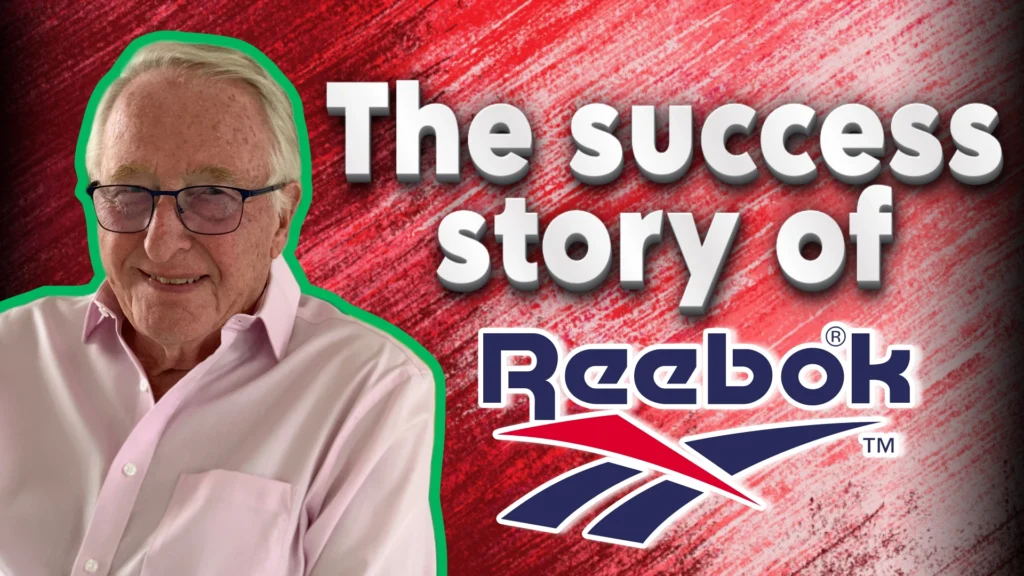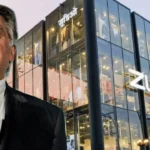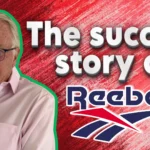In the competitive world of athletic footwear, few brands have experienced Reebok’s meteoric rise and fall. Once a household name synonymous with fitness and fashion, Reebok’s journey is a captivating tale of ambition, innovation, and the harsh realities of market dynamics. With roots tracing back to a family legacy in athletic shoe manufacturing, two brothers dared to challenge the status quo, ultimately crafting a brand that would dominate the fitness landscape.
But how did this underdog soar to heights, only to stumble in a fiercely competitive market? Join us as we delve into the dramatic saga of Reebok, exploring its remarkable ascent and the missteps that led to its decline. Have you ever wondered what makes a brand successful and how quickly fortunes can change in the business world?

Table of Contents
Chapter 1: A Legacy of Ambition
Exploring the Family Roots and Aspirations Behind Reebok’s Founding
With business running deep in their blood, two ambitious entrepreneurs from England created a footwear brand that became the most successful in the world for a time. Sport, fitness, and television were all dominated by one shoe brand—an underdog that flew too close to the sun and eventually paid the price. This is the story of the dramatic rise and fall of Reebok.
Joseph William Foster was born in 1935, and his parents expected big things from him. His grandfather, from whom he got his name, had founded an athletic shoe company he ran with his children. JW Foster and Sons had a long history in the athletic community, having developed some running shoes in the early 20th century. The running pumps or spikes on the bottom of the shoe were revolutionary at the time and gave athletes much more grip on grass and track.
Landmark achievements included Derek Ibbotson breaking the mile world record in JW Foster shoes and providing English Premier League teams with footwear. This company would be the foundation of Joseph’s business, but he had radically different ideas from those of his ancestors.
27 Joseph joined the family business but was quickly called up for national service to serve in the military. When he came back, he and his brother Jeff were less than optimistic about the direction of JW Foster and Sons. On the rise were brands like Puma and Adidas. Joseph and Jeff didn’t believe enough was being done to beat the competition, but their elders didn’t listen. Their father and uncle were running the business together and refused to change a thing.
So, in 1958, they founded Mercury Sports Footwear, believing they could create a better company. However, they were forced to develop a new one when they discovered that a company was already registered under that name. After winning a running race as a child, Joseph Foster had won a shiny new Webster dictionary, and this was how he and his brother would find their new company’s name—flicking through the pages for anything that sounded sporty, fast, or appealing.
Joe found his way to the “R” section, where a type of African antelope had the unusual name of “Rhebok.” They liked the ring and thus continued their family’s tradition, but on their own. Reebok was born. Instead of the African spelling, they chose to use the American version.
Their ultimate goal was to enter the American market, but after ten years and a failed visit to the States, Reebok was having trouble expanding. Being based across the Atlantic in the United Kingdom hindered their chances of finding a distributor. Fireman was given exclusive rights to sell Reebok in the country under the new company Reebok USA Limited. The first Reebok shoe in America was priced at $60 (or $250 today).
Their release coincided with a fitness boom in the country, with televised workouts, aerobics routines, and recreational sports more available than ever. The women’s fitness community was a vast market bursting out of California, and celebrity fitness pioneer Jane Fonda’s popular aerobics classes caught on. This helped inspire the development of the Reebok Freestyle, which would be the company’s first big hit.
Chapter 2: Finding Their Footing
Navigating Early Challenges and Seizing Opportunities in the American Market
Paul Fireman was initially apprehensive about the idea, but after a prototype of a Reebok Freestyle was mocked up, he was convinced. It was a model totally unlike any of its competitors at the time. While Nike and Adidas made bulky, ostentatious footwear, Reebok created a thin, understated, clean shoe resembling a ballet slipper.
A massive order of 32,000 units was made, and after a quiet first week, Fireman started to become nervous; after offering a promotional seminar with celebrity Richard Simmons, the shoes flew out of the store. Soon, the Reebok Freestyle was all that any aerobic enthusiast was wearing. At the 1985 Emmy Awards, actress Cybill Shepherd wore a pair of orange Reeboks matched with her dress, proving how far the brand had come.
Chapter 3: Claiming the Throne
How Reebok Rose to Dominance and Surpassed Competitors in the Athletic Footwear Industry
Not long after the success of the Reebok Freestyle, Fireman bought the rights to the English company as well, bringing the headquarters to Massachusetts, renaming it Reebok International Limited, and listing it on the New York Stock Exchange. It may have seemed like a risk, but looking at the numbers, the purchase was a no-brainer. Two years after Reebok’s U.S. U.S.nse had been secured, sales in the country had reached $1.5 million (or $4.4 million today), which was only the beginning. That figure skyrocketed almost ten times over the next year alone. The United States was the right market, and the Fireman made the right Fireman.
With total control of the company, Firemann shifted his attention from the women’s aerobic market to the men’s market, with models like the Newport Classic, the Revenge Plus, and the Workout. These were trendy, Country Club-ready sneakers, perfect for exercising and socializing. At the time, the market was crowded with big names like Adidas, Puma, ASICS, and Nike. First, Reebok needed a new logo. The original British logo featured the Union Jack; a redesign made the logo into a vector, creating a more abstract collection of lines. In 1988, Reebok was the king of footwear, posting a whopping $1.8 billion in sales (which would be $4.6 billion today). This number, for the first time, was higher than Nike.
It was more than 25% higher than Nike’s sales that year, claiming 25% of the athletic footwear market. Reebok had taken Nike by surprise, emerging virtually from nowhere and using the women’s aerobic demographic to springboard itself into the mainstream. Unfortunately, Reebok didn’t get much time to enjoy the fruits of their labor and wasn’t entirely prepared for what would come next.
Chapter 4: Inflating Success
The Introduction of the Reebok Pump and the Power of Celebrity Endorsements in Building a Brand
Seeing the success of Reebok’s increasingly fashionable fitness products, Nike went into overdrive, signing Michael Jordan and releasing the Air Jordan series, followed by the wildly popular Air Max series. It was success after success for a brand quickly becoming embedded into the fabric of sport and culture. In a constant battle to remain relevant, Reebok attached itself to the sporting world. It sponsored tennis players Boris Becker and John McEnroe, making the brand a household name by the end of the 1980s when the Reebok Pump took the company to a new level.
In the same year that the Pump was released, Joe Foster, the co-founder of Reebok, decided to retire in 1989. His final act had been the development of the Reebok Pump, perhaps sensing that it was the peak of the company’s success. After Joe’s departure, the company shifted its focus toward the technology inside its products, and the Pump was just that. It used inflatable chambers at the top of the shoe to give customers a customized fit. Iconically,
NBA player D. Brown inflated his Pumps moments before winning the 1991 NBA Slam Dunk Contest. Unsurprisingly, the Reebok Pumps exploded onto the basketball scene, worn by many NBA players, including Shaquille O’Neal and Allen Iverson. Reebok also branched out to find new ambassadors, including rappers Jay-Z and 50 Cent. Despite these highs, Reebok would never again match the mania during the growth of the 1980s.
Chapter 5: A Shift in Strategy
Examining Reebok’s Acquisition by Adidas and the Strategic Missteps that Followed
Their growth in sales plateaued throughout the 1990s. Reebok fought to keep up with Nike by releasing a Shaquille O’Neal particular edition model and unveiling their newest shock absorption technology, DMX. But in 2000, Nike’s sales were triple those of Reebok, which had fallen out of the trendy casual sneaker spotlight. Reebok chose to return to its roots; it wasn’t quite the spike running shoes of the English athletic days. They signed big names like footballer Thierry Henry, but these sponsorships failed to raise the brand value anywhere close to what it had been in previous decades. The brand was a rudderless ship without Joe Foster; even worse, it sank.
Chapter 6: Struggles and Setbacks
The Challenges of Partnerships with CrossFit and the UFC: Navigating Criticism and Market Decline
By 2005, a German athletic company was eyeing Reebok, looking to use it to mount an attack on Nike, which was still dominating the global market. That company was Adidas, which started over 80 years earlier with similar roots to Reebok. Adidas began making spiked running shoes, with their first model showcased at the 1936 Summer Olympics by Jesse Owens. The company had recovered from a tumultuous decade through the 1990s and succeeded again in the early 2000s, emerging as the only genuine alternative to Nike’s dominance.
A vital part of that strategy was to make Reebok a subsidiary of its international portfolio for around $3.8 billion (or $5.94 billion today). However, Adidas took it in the wrong direction, focusing on pseudo-innovative technology like ZigTech and partnering with CrossFit rather than following Nike’s path of more casual footwear. In many ways, this move made sense for Reebok, a company that had found its initial success with the surge in popularity of aerobics. CrossFit was a natural successor to the 80s fitness craze.
The Rolls-Royce: Success, History, Case Study
Audi Success Story: Case Study of Audi and Future of Luxury Mobility
Mercedes-Benz: World’s First Car Success Story
Ford Sucess Story: The Incredible Rise of Henry Ford
Looking to imitate what Under Armour did in the sports industry, Reebok agreed to a 10-year partnership with CrossFit. Reebok catered to this niche, advertising how it had gathered data from CrossFit participants to create targeted products and how CrossFit athletes had different demands from runners or other sportspeople. Reebok signaled that it was surrendering the retail battle with Nike and trying to specialize its demographic, such as Lululemon or Sweaty Betty. Initially, there was a 6% sales bump with the release of products like the CrossFit Nano 7, but CrossFit failed to make the exact cultural imprint that the celebrity aerobics videos and TV T.V.outs did in the 1980s.
Chapter 7: A New Direction
Reevaluating the Brand’s Future After Significant Losses and Exploring Paths to Recovery
Just as doomed was Reebok’s six-year contract with the UFC, worth over $70 million in 2014 (which would be closer to $90 million today). The sportswear company swooped in at a time of immense popularity in mixed martial arts. Still, it was quickly criticized for removing all individual sponsorships, lowering fighter pay, and being used as a bargaining chip to sell the franchise. Unlike in most other combat sports, the Reebok deal with the UFC meant that fighters had to wear a uniform, and their payment was modified to become a tiered system drawn directly from Reebok.
Not helping the company’s image was the disastrous rollout, which saw several fighters’ names misspelled and clothing branded generically. Fighters would occasionally speak out against the deal but admitted that the consequences behind the scenes for doing so were severe. Like CrossFit, this was another major misstep for Reebok. For five decades, Reebok had tried and failed to sponsor sports leagues, including Major League Baseball and the NBA. Unlike Nike, Reebok hadn’t seen brand value increase from its partnerships, and its products failed to have a presence.
A different strategy saw some success with a brief revival in 2015, driven by Reebok re-releasing and reimagining some of its classic collections. Models included the Insta Pump, the Club Classic 85, and Workout models. This was well-received by sneaker collectors and older demographics, but cashing in on nostalgia and the rapid success of the 1980s was all Reebok could do by now. This strategy was always doomed to collapse.
Recently, Reebok saw a vast demand drop from 1.7 billion EUR in 2021 to 353 million in 2022. This was partly due to the pandemic and global supply shortages, but Nike still saw its income grow in the same timeframe. In the same year, Adidas was finally ready to admit its mistake; it sold Reebok to Authentic Brands Group for $2.5 billion—less than half of what it bought for when adjusted for inflation. Still, Joe Foster maintains that there is nothing wrong with Reebok now but that in the last 17 years, it has been dominated by a much bigger player in Adidas. If it is given freedom again, he believes things could turn around.
Joe and his brother helped build the company into a global phenomenon, but after he left the company in 1989, Reebok was without leadership or direction. Resources poured into fighting with Nike could have been better used elsewhere to reestablish the brand identity rather than simultaneously experimenting in too many areas. Failed partnerships with CrossFit and the UFC ensured that Reebok crashed and burned instead of slowly fading into irrelevancy.










